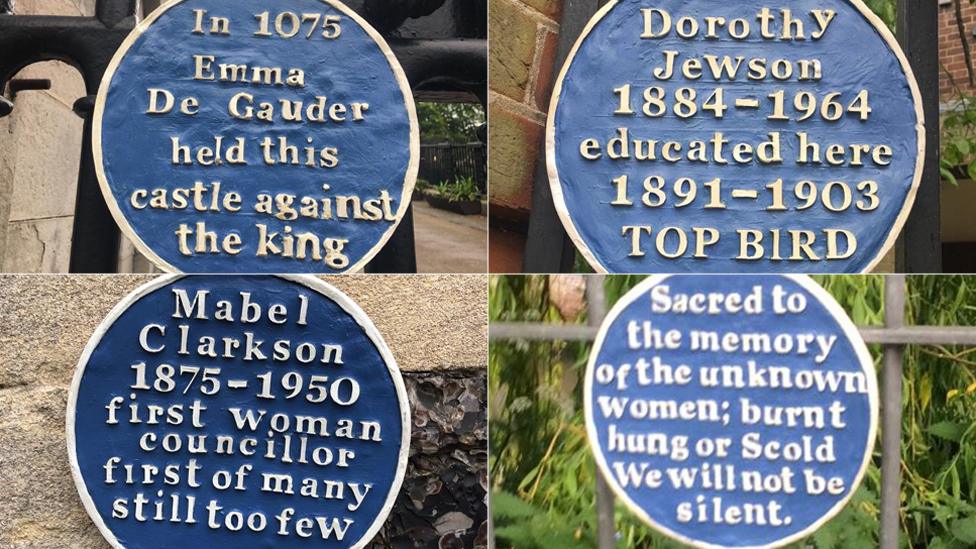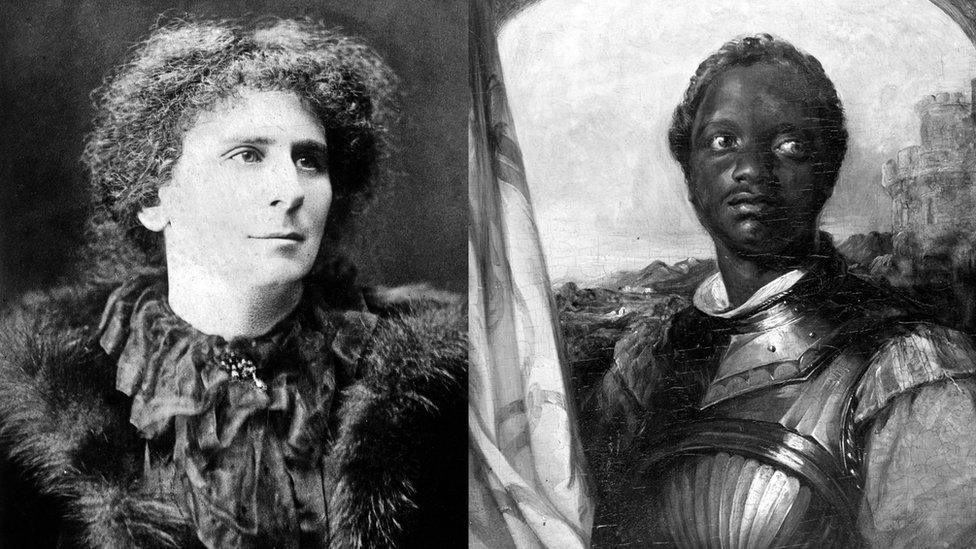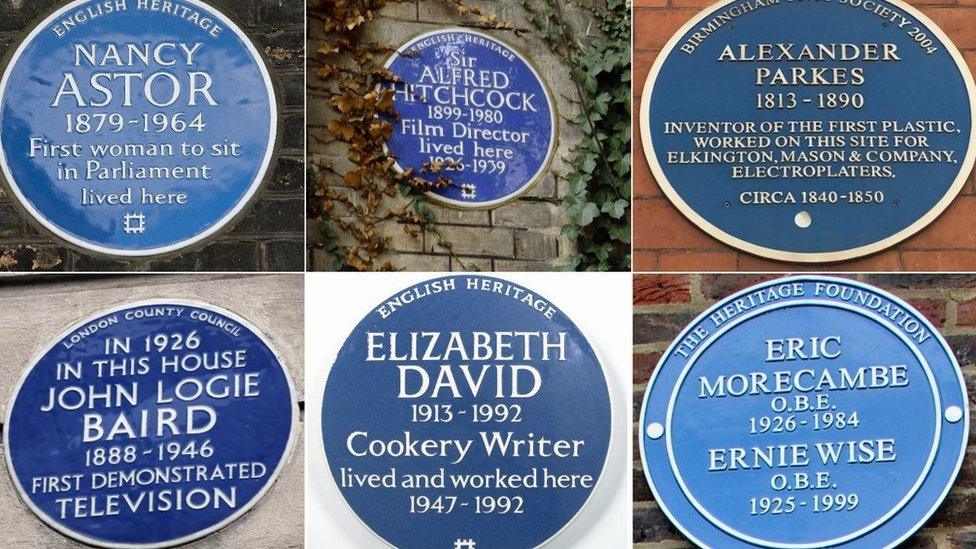Unofficial Norwich blue plaques mark 'rebel women'
- Published

The plaques were hand-made by theatre group members
Unofficial blue plaques have gone up on buildings "to balance the lack of commemorations" to a city's women.
The signs were made as a protest by the Common Lot theatre group after it discovered only 25 of 300 blue plaques in Norwich were dedicated to women.
Group members put up eight signs around the city to mark the achievements of "more of its heroines".
Norwich City Council said it was unsure if any had gone up on its buildings and had received no complaints.
Until now the theatre group behind the "guerrilla" signage had kept its identity a secret.
All that identified those behind them was a Twitter page called @rosiesplaques.
'Rebel women of Norwich'
But Siobhan O'Connor, has now decided to "come clean" on behalf of the rest of the theatre group to explain its activism.
They wanted to make a point about the lack of official dedication to local women, she said.
"People have really embraced the plaques and have tweeted to tell us they really love them," she said.
Ms O'Connor said they discovered the lack of female commemorations while researching for a show.
Information from the Norfolk Record Office revealed "hundreds of notable women" but they chose eight, mainly because the plaques take so long to make, she said.

'Worthy women'
The unofficial plaques include tributes to:
Emma de Gaudar, who at the age of 16 was said to have held Norwich Castle against a siege by William the Conqueror
World-famous butterfly collector Margaret Fountaine
Suffragette stories, including Mabel Clarkson, who became a Lord Mayor of Norwich and a city councillor before women achieved the vote
Dorothy Jewson, the first female Labour MP, who attended Norwich High School for Girls
One plaque marks the place where there was a ducking stool for women accused of witchcraft
Women thrown out of a Quaker meeting house for being profane and opinionated for talking about women's rights

Allow X content?
This article contains content provided by X. We ask for your permission before anything is loaded, as they may be using cookies and other technologies. You may want to read X’s cookie policy, external and privacy policy, external before accepting. To view this content choose ‘accept and continue’.
The plaques were hand-made, using a silicon mould filled with clay and hair in which lettering was impressed in reverse before being left to dry, painted and lacquered.
"It's a transient project really, the plaques can be removed in five minutes," Ms O'Connor said, but she was hoping they would not be taken down.
"There's so much to learn about the rebel women of Norwich," she added.

The plaque to the first female Labour MP, who attended Norwich High School for Girls
- Published20 November 2018

- Published29 May 2016
